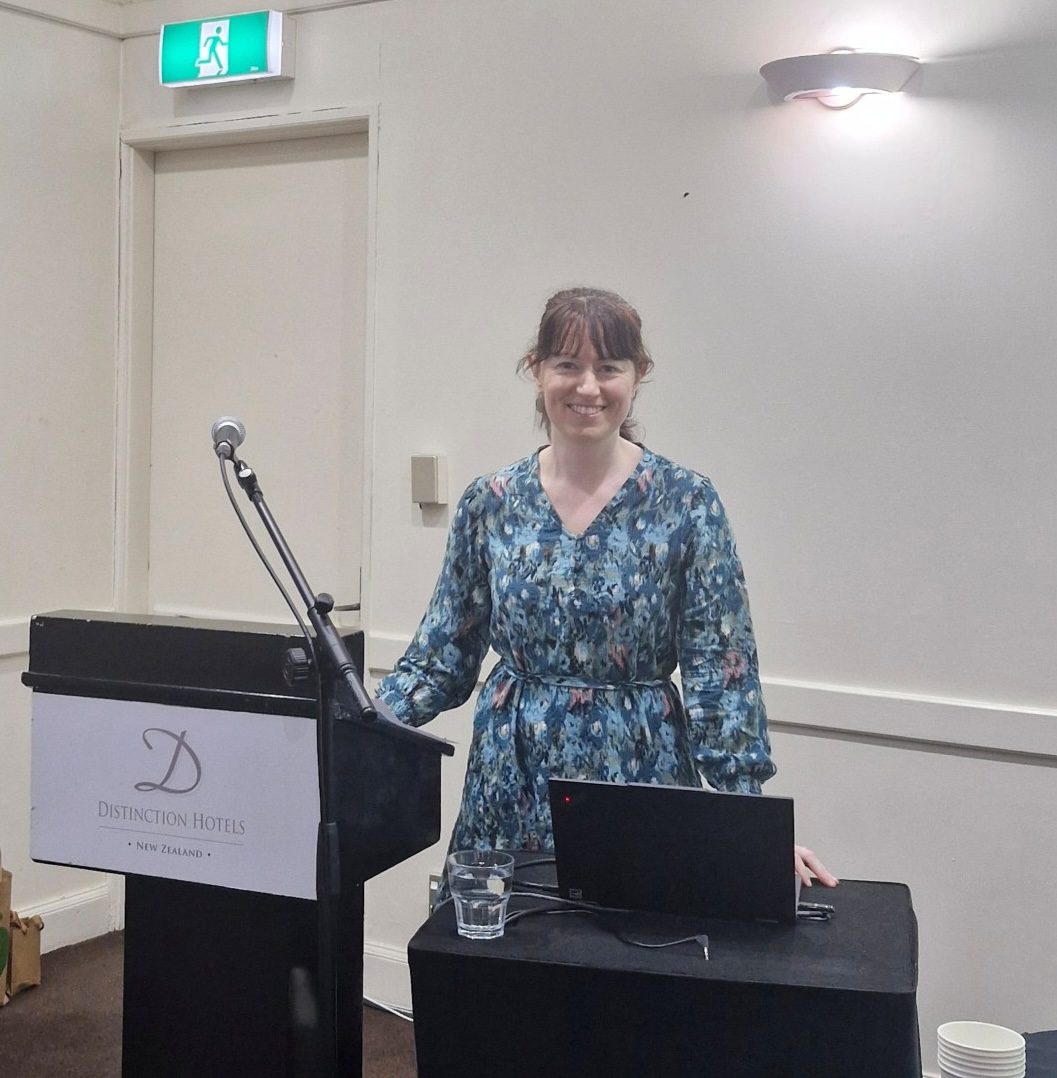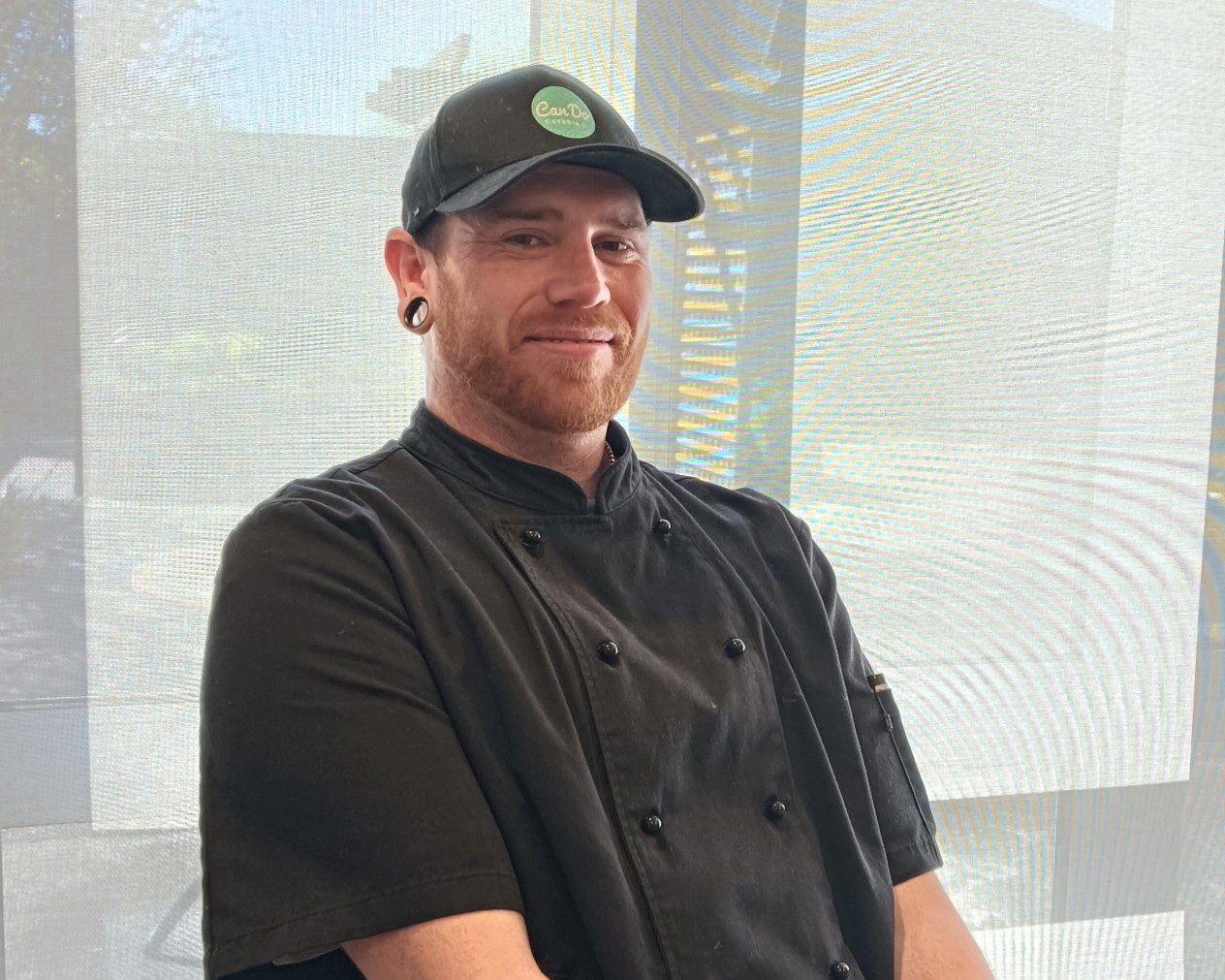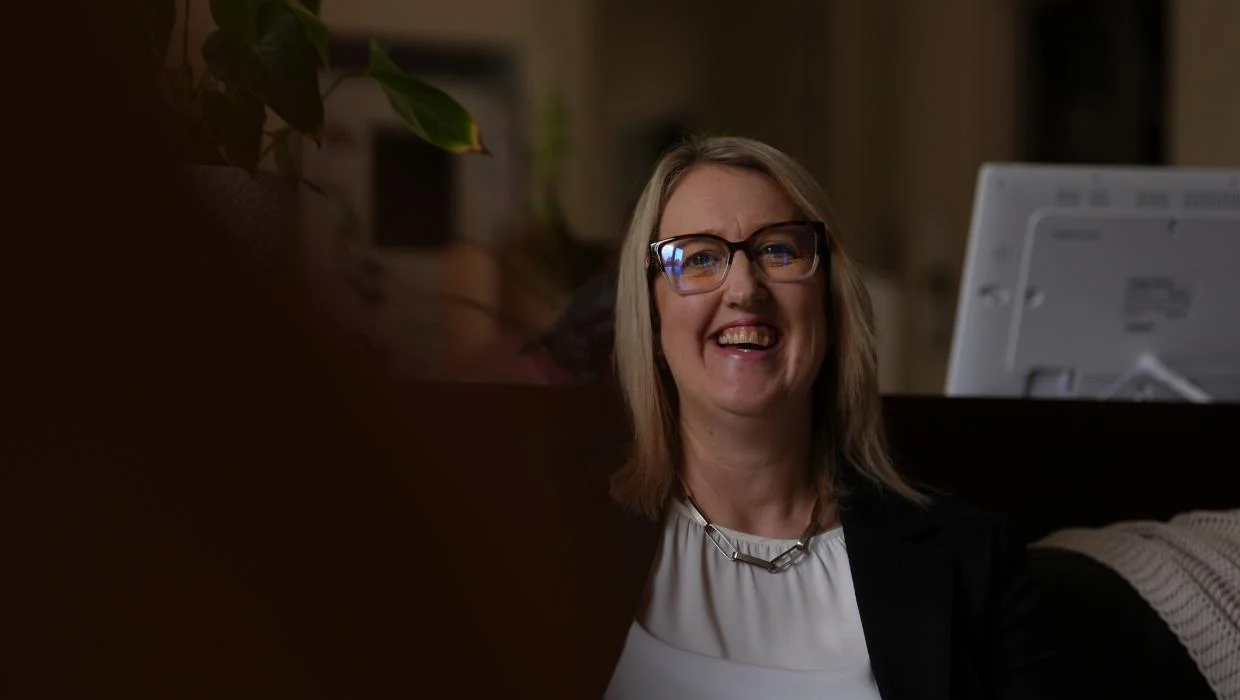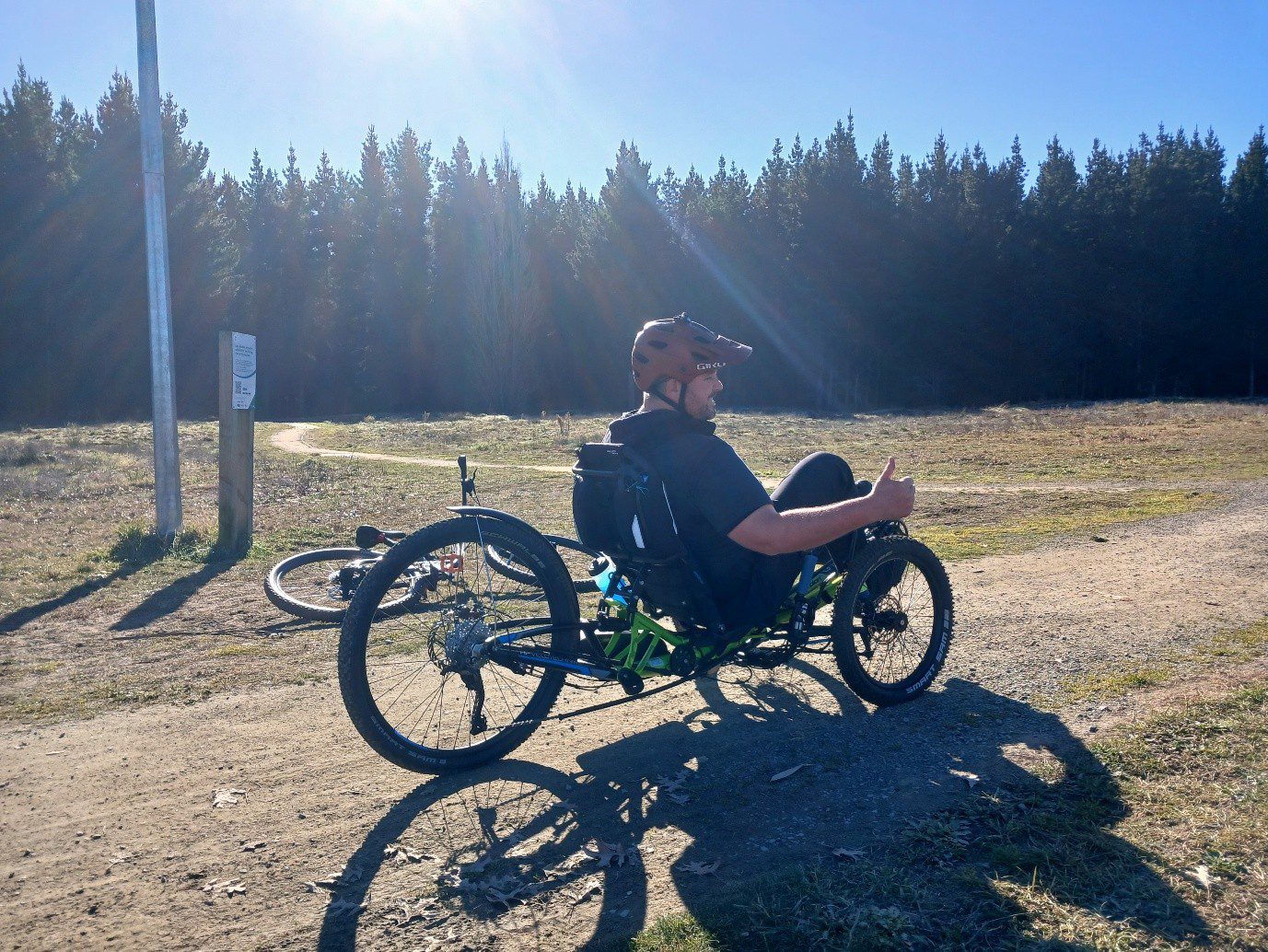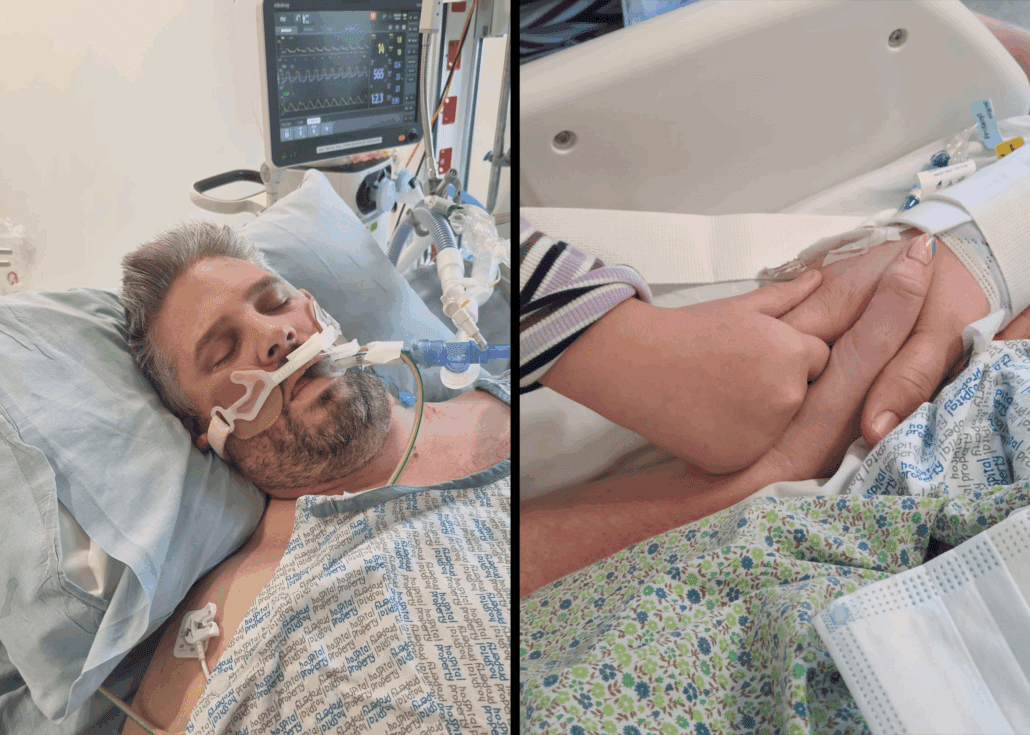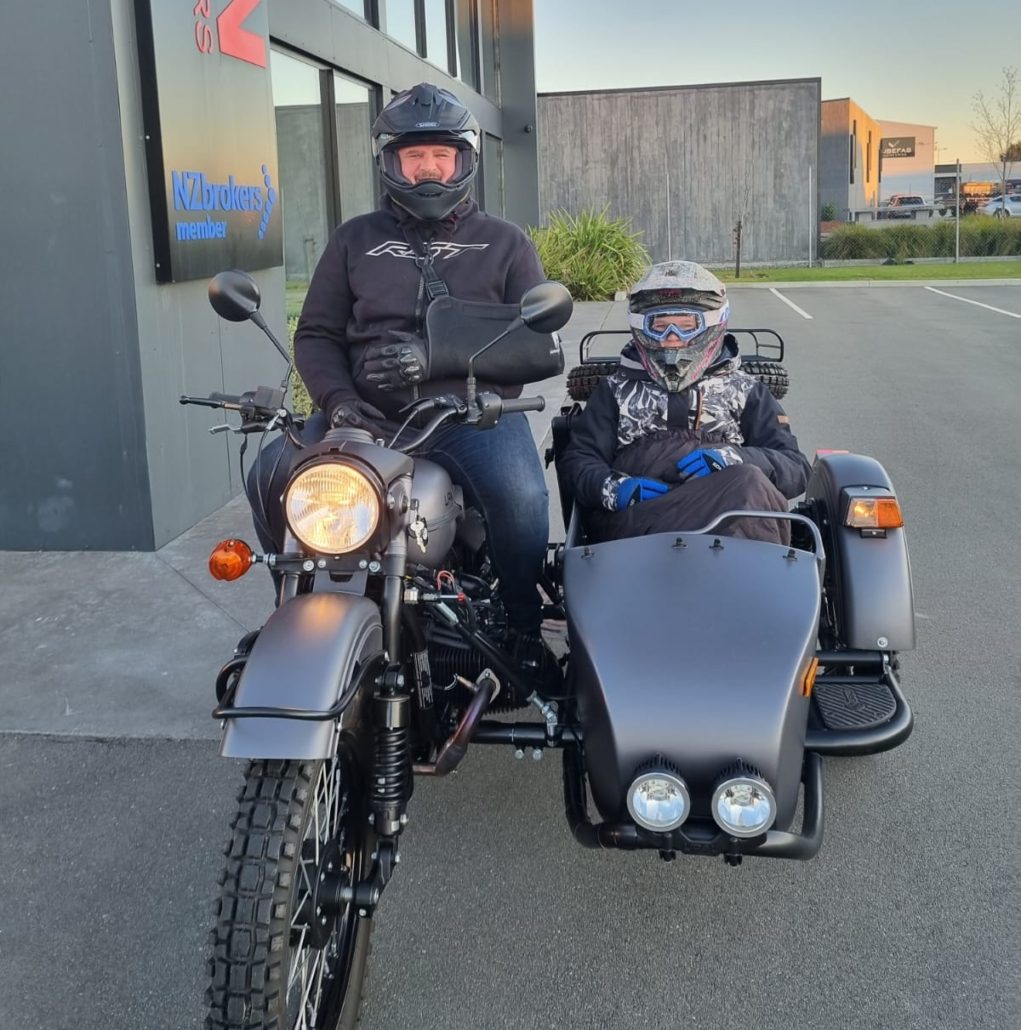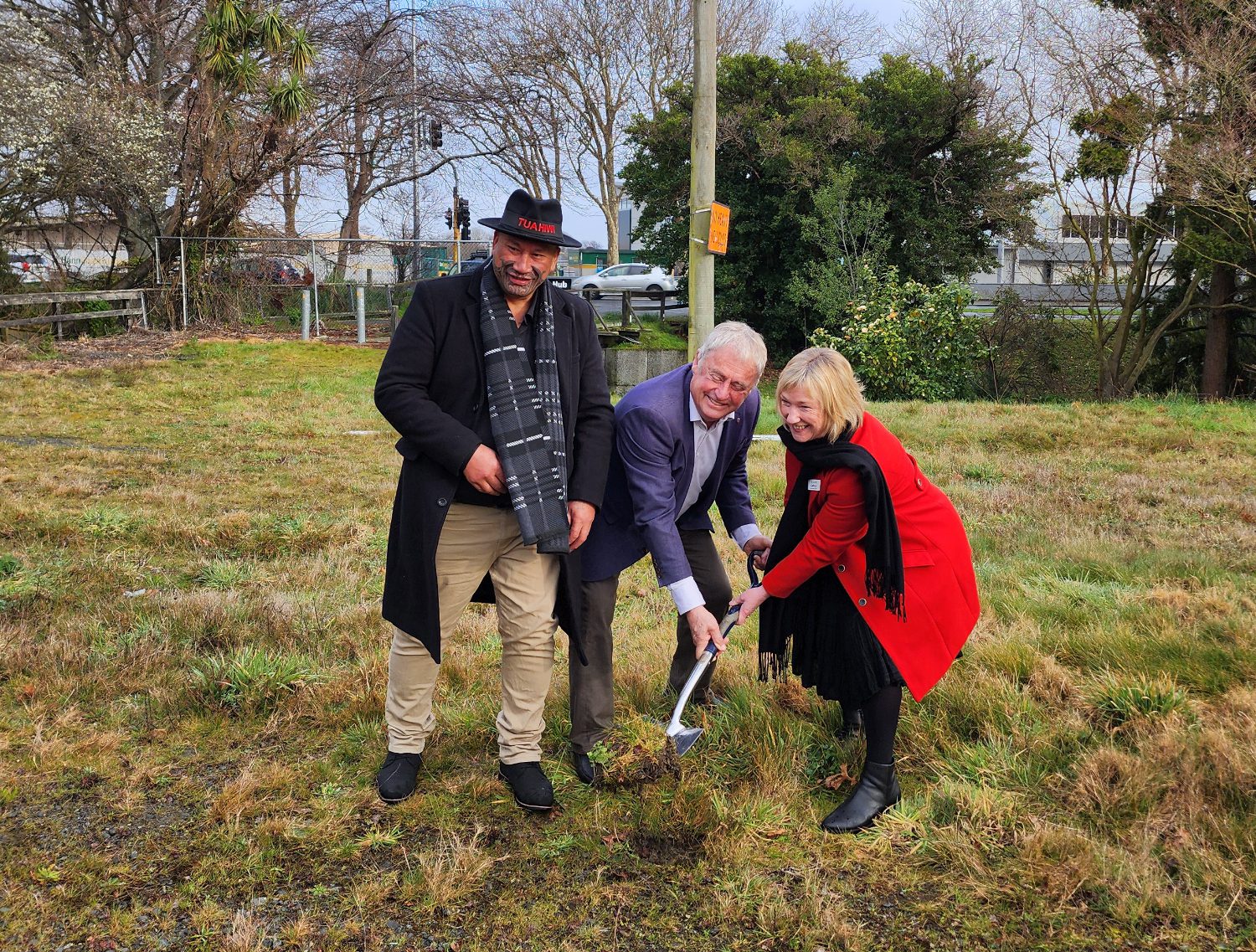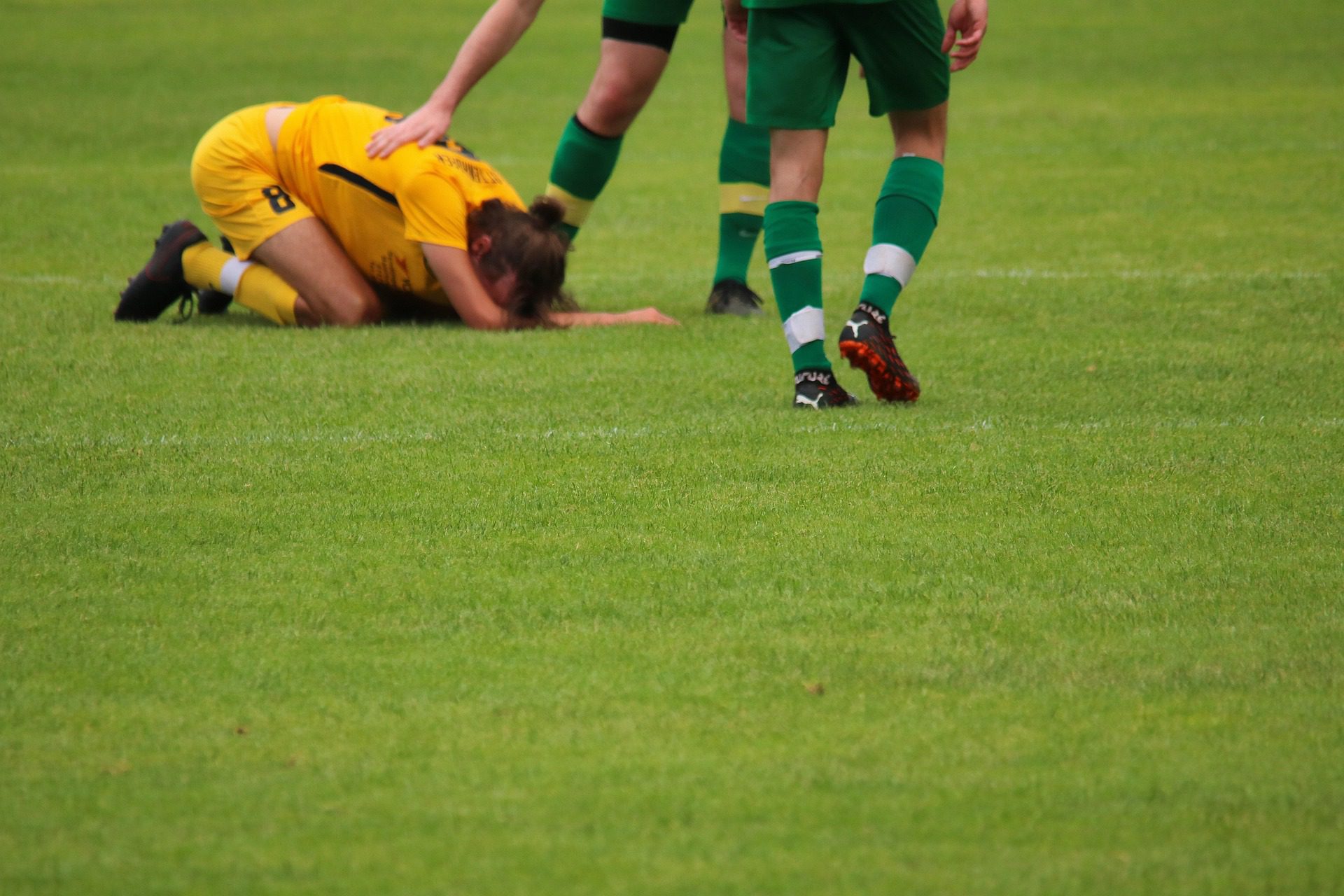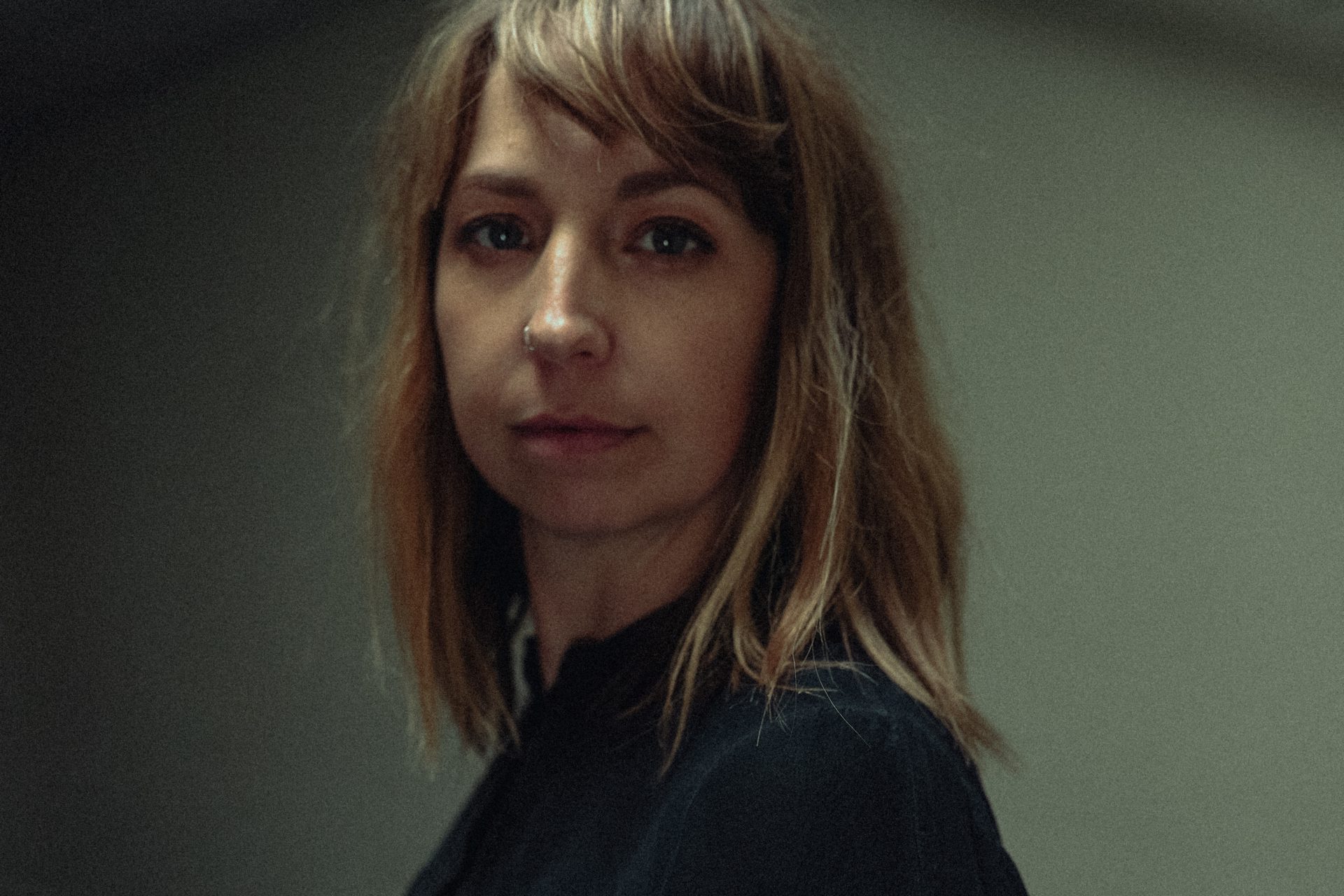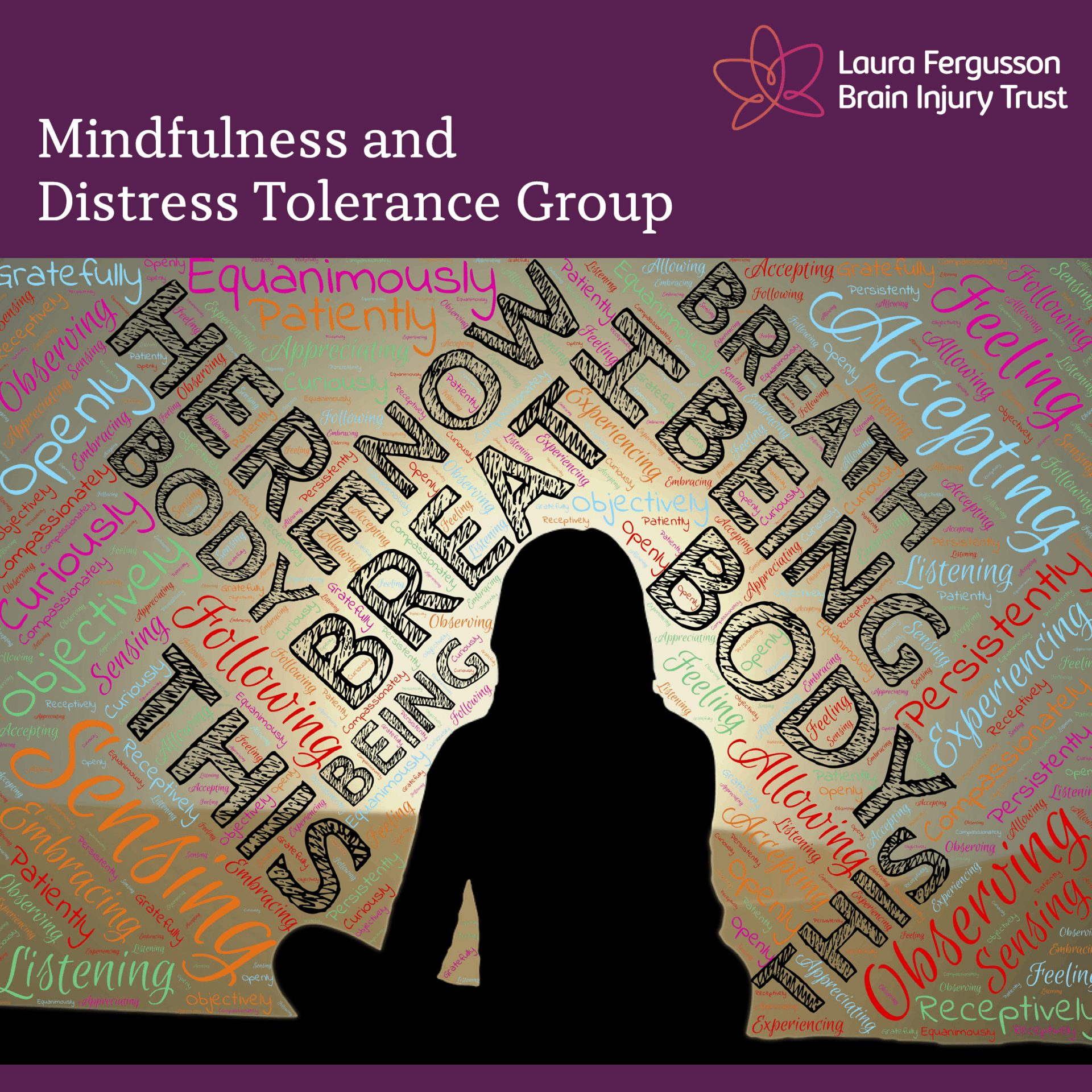Brendan Daly credits his loving family and support from Laura Ferguson Brain Injury Trust in helping him regain his independence and rebuild his career following a traumatic brain injury and severe nerve damage to his arm.
Brendan suffered four brain bleeds, four broken ribs, a punctured lung, a crushed artery and a total brachial plexus injury to his left arm when the motorbike he was riding collided with a vintage Jeep on a blind corner near Little River in June 2023.
The accident occurred on what was meant to be a routine morning ride around Banks Peninsula with his brother-in-law Daryl. Brendan, who had been riding motorbikes since age 13 without serious injury, was thankful to be wearing good safety gear when the crash happened.
“It was just really, really unfortunate,” he said. “The police were involved, and they’ve said there’s no one at fault here. I really do take a lot of comfort out of that fact because I don’t have to carry any guilt for it.”
Emergency responders performed a life-saving pneumothorax procedure at the roadside, cutting a hole in Brendan’s chest to relieve pressure from his punctured lung. He was then airlifted to hospital, where he immediately went into cardiac arrest.
“I don’t think you can really come any closer than that,” he reflected.
Brendan’s recovery journey began in Christchurch Hospital’s intensive care unit, where he spent four days in a coma. He remained hospitalised for nearly four weeks before being transferred to Wellington’s ABI Rehabilitation Centre.
Brendan’s traumatic brain injury initially caused severe memory problems and confusion. He recalls waking up in Wellington Hospital at 4am, attempting to leave for the airport to catch a flight that didn’t exist.
“I would ring my mum in the middle of the night asking, ‘Where am I?’ And she would have to explain where I was and why. ‘You’re 39 years old, and you’re ringing your mum.’”
He credits his wife Liz who bore much of the strain during those early weeks, staying by his bedside and managing care for their two children while he recovered. Their son Luke had contracted COVID-19, requiring Liz’s mother to move into their home to care for him.
“I think what a load that is to take,” Brendan said. “How can I repay that? How do you say thanks to that?”

Community rehab with Laura Fergusson Brain Injury Trust
After some time in Wellington, Brendan was able to return home and The Laura Fergusson Brain Injury Trust became instrumental in his rehabilitation, providing occupational therapy, physiotherapy and psychological rehabilitation and support. Having lost the use of his left arm, team members from the Trust helped him to learn basic skills to foster his independence, including how to tie shoelaces with one hand and to use adaptive cutlery.
“The Laura Fergusson team meet you where you are, and they never came across as condescending,” he said. “These people were wonderful. They were just fantastic with their approach.”
Gaining independence through driving
Following great progress with his brain injury, one of Brendan’s most significant challenges was regaining his driving licence, which Laura Fergusson Brain Injury Trust Occupational Therapist Jarrod Withers helped facilitate through assessments and equipment modifications.
Jarrod says, “Brendan was able to demonstrate that from a brain injury perspective he had made sufficient recovery to support him in returning to driving and his only remaining challenge was going to be the physical aspect of driving.”
Most people are unaware of the sort of vehicle modification options available to support with a return to driving. Brendan now uses a spinning knob on his steering wheel to accommodate his limited left arm function.
Jarrod continues, “Brendan came in, trialed a modification in our assessment vehicle and showed immediate control over the vehicle indicating a return to driving with a simple modification was going to be a feasible and realistic goal.”
“Jarrod helped me gain my independence back. I took a test with Jarrod to identify obstacles and hazards and have an assessment; he’s a brave man!
“Not being able to drive was a real loss of independence,” Brendan explains, “I had a lot of help around me, but I wasn’t able to do little things like go and pick up the milk. I was so keen to be able to be mobile again. Being able to drive again, it’s fantastic.”
Gaining strength with physiotherapy
In December 2023, Brendan underwent a 10.5-hour operation where surgeons grafted nerves from his legs into his neck and shoulder. The procedure has slowly restored some movement to his left arm, though progress remains gradual.
“My physiotherapists Ciaran and Lizzie have been so encouraging and gave me exercises to help move my arm. You’ve just got to keep going.”
LFBIT Physiotherapist Lizzie says, “Brendan is an absolute pleasure to work with. He is highly motivated, consistent, realistic and reflective. He has such an inspiring outlook on life, and I know his recovery and lessons learned will inspire others! He’s got a brilliant support unit and every step of the way we’ve been able to collaborate with them.”
Taking care of mental health
The Trust also connected Brendan with one of the team’s clinical psychologists, which he initially resisted but found transformative.
“I didn’t think I needed that kind of support, but it was amazing. I liken it to if you’ve got a pack of cards and someone says put them in order – it’s going to be a lot easier if you just spread it out on a table. My psychologist helped me put everything back into some type of order that I could manage.”
Returning to work
Incredibly, Brendan is now back working four and a half days a week as an insurance broker, a milestone he once thought impossible.
Returning to work gradually, Brendan started with a few hours per day before building up to his current schedule. The family insurance brokerage he worked in has since merged with a larger firm, where he now manages corporate accounts.
“They said you need to prepare yourself for the possibility you might never go back to work. To go from that guy to working four and a half days a week full time as an insurance broker, that’s quite satisfying.”
“I’m quite proud that I’ve been able to return to work in the capacity that I have,” he said. “I also want to acknowledge that without the help that I’ve had, I wouldn’t have been able to do it.”
Finding new ways of doing things
Despite the trauma from his life altering accident, Brendan has found new ways to continue his passions. He’s teaching his daughter to play bass guitar, an instrument he can no longer play himself due to his arm injury. He’s also purchased a vintage-style motorbike with a sidecar, allowing him to ride again safely with his daughter as a passenger.
Lizzie has also supported Brendan to get back into road cycling again on an adaptive bike. “It’s been a joy supporting Brendan’s return to the community and especially back into biking with his family,” Lizzie said.
Brendan reflects, “It’s great to be able to get back to some of my old activities, It’s doing the same things, but in a different way,”

“Good outcomes can happen”
Brendan recently visited the Wellington rehabilitation centre where he was treated, encountering one of his former doctors who became emotional upon learning of his recovery.
“She said, ‘I needed a win today,'” Brendan recalled. “I want to be encouragement to the people that provide the help and the people that need the help that good outcomes can happen.”
His advice to others facing similar challenges is simple: celebrate your small wins and accept help when it’s offered.
“It’s actually okay to need help and accept what’s there because it’s all in place to help you have a better outcome,” he said. “It took me a while to grasp that. The tools and equipment that you’ve been given to get better – I wouldn’t have had the recovery without the help.”
Brendan sums up his experience with heartfelt thanks: “I can’t express how thankful I am to Laura Fergusson Brain Injury Trust for what they’ve done. To be back up and about, driving, and back at work is a direct result of the work that people like the Laura Fergusson Brain Injury Trust have put in.”
